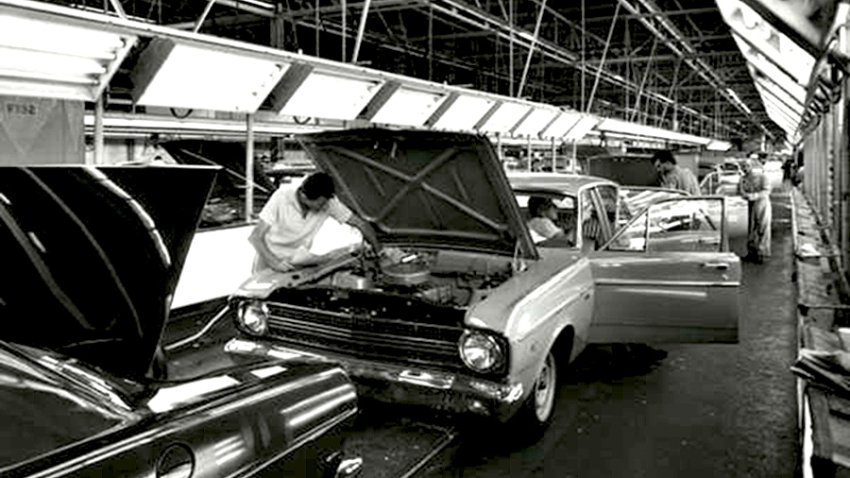
Recently-released former secret United States embassy cables reinforce the long-held view that Bob Hawke, the prominent union leader, Labor Prime Minister and all-round "Aussie larrikin", was also an informant for the US government and the Central Intelligence Agency.
According to a new paper by Cameron Coventry from Federation University, embassy documents from 1973 to 1979 while Hawke was Australian Council of Trade Union (ACTU) President, reveal he was also in regular contact with the US Embassy’s Labour Attaché.
Writing for the July 3 Guardian, Jeff Sparrow said the Attaché told Hawke about a potential union dispute at the joint US-Australian spy base at North West Cape in Western Australia.
The cables record that Hawke “volunteered to intervene informally,” because he felt “concern and surprise at the militancy” of the workers.
A cable sent back to Washington from the US Ambassador to Australia in 1974 emphasised the importance of Hawke upcoming visit to the US.
“There is little doubt that he has major potential as a Labor Party leader. Now 44, he has every prospect of being a major figure on political scene for next 20 years or so, and it will be worth our while to make a real effort to develop a worthwhile program for him,” it said.
Coventry said the Americans valued their relationship with Hawke because, as Sparrow noted, he “helped protect [US] defence installations, provided information about union disputes and warned officials that installations could be targeted”.
“The Americans particularly appreciated Hawke’s willingness to de-radicalise the labour movement,” Sparrow said.
Coventry said: “Hawke proved useful in pre-empting and pacifying union disputes.”
According to Sparrow: “On another occasion, [Hawke] informed them about industrial tensions within the Ford Motor Company and other multinationals, warning the ambassador that such companies might be ‘targeted’ by activists and unions.
“The US officials also thanked Hawke for, as they said, ‘mastermind[ing]’ the ‘erosion’ of popular anti-uranium policy by playing on a ‘break in union solidarity’.”
For the US, Sparrow said, Hawke was “an experienced chameleon”, a man who “successfully played down his academic record and bookish background” to present himself as “the ideal Australian Labor leader”.
Melbourne-based union militant Joe Montero wrote in The Pen on July 5 that Hawke had supported “holding down wages from as far back as 1973”, blaming high wages as the “cause of the economic problems of the time”.
Hawke’s solution was to hold wages down “through a tripartite arrangement of employers, government and unions”.
“He implemented this after he became prime minister in 1983, through the misleadingly named Prices and Incomes Accord,” Montero said. “A cable reveals that the tripartite idea was suggested to Hawke through his contacts with the United States.”
Montero, who had worked at the Ford car complex in Broadmeadows in Melbourne in 1973 gave a unique insight into Hawke’s close relationship with Ford and other US capitalists which involved him warning them about union and activist campaigns.
“An investigation on behalf of the Ford Shop Stewards Committee around the 1981 [Ford Broadmeadows] strike, revealed Hawke’s connection to the CIA-associated Harvard Union Program.
“He and the then national secretary of the Vehicle Builders Union, Len Townsend, were trustees of the Australian chapter of the program, alongside Laurie Short of the Iron Workers Federation.
“At Ford, Townsend, with the behind-the-scenes assistance from Hawke, began to target shop stewards and union activists.
“I was a principal target. I vividly remember the occasions, usually prior to a union meeting, when Townsend, flanked by company senior management, would come to warn me at my workplace. On a couple of occasions, Townsend threatened to have me killed.
“Each year, a group of unionists is sent to [the US] for training at Harvard [University]. A way was found to get a shop steward to attend under cover. This confirmed that this [program was] about creating operatives to apply American policies within the Australian union movement and, through this, into the Labor Party. The program involved the American Chamber of Commerce in Australia.”
Shortly after Hawke died in 2019, I wrote a piece for Green Left in which I argued that his strategy to tame the unions started during his union career and it continued when he became Prime Minister.
“Hawke, using his full authority as the former president of the ACTU and then prime minister, played a key role in orchestrating the shackling of the union movement to a strategy of class collaboration with the Australian corporate sector and the state.
“We are now living with the disastrous consequences of the decline in union power and militancy that exists today.”
Whatever else might be written and spoken about the “silver bodgie”, Hawke’s primary legacy is the person who did more than anyone else to undermine the Australian labour movement’s tradition of industrial struggle and militancy.
Hawke played a critical role, along with his successor, Prime Minister Paul Keating, in launching the neoliberal offensive during the 1980s, I noted.
Perhaps Hawke’s most damaging legacy is the taming of the trade union movement, which has had long-term serious consequences right up to this day.